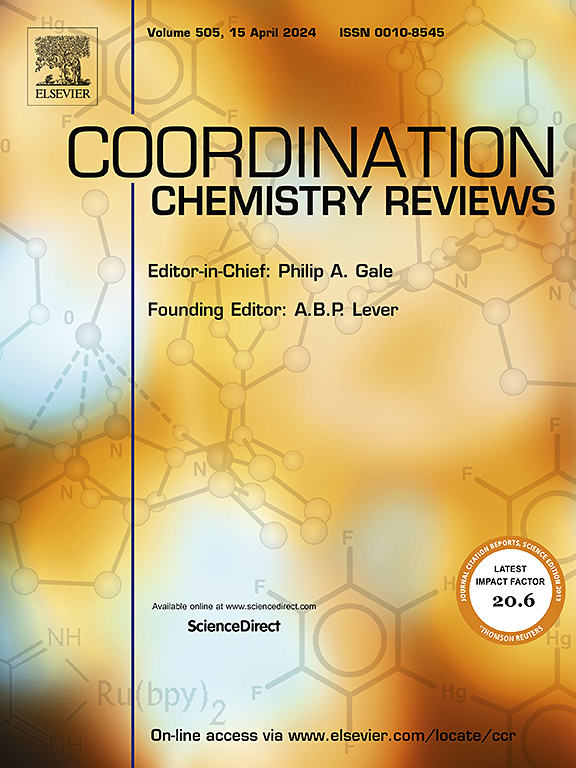Advances in copper-based electrocatalysts for electrochemical reduction of CO2 to ethanol: Operando, theoretical, and empirical perspectives
IF 20.3
1区 化学
Q1 CHEMISTRY, INORGANIC & NUCLEAR
引用次数: 0
Abstract
One of the most effective methods for achieving carbon neutrality is the Electrochemical Carbon Dioxide Reduction Reaction (CO2RR). The conversion of CO2 to ethanol using the electrochemical method is quite challenging primarily due to the numerous electron and proton transfers (EPT) required for the C![]() C bond formation process. Currently, copper-based electrocatalysts are widely preferred for CO2RR ought to their ability to address the primary challenge of EPT in electrochemical cells. In this review, we examine the recent advancements in the field of Cu-based electrocatalysts for electrochemical CO2RR to produce ethanol. Herein, we discuss how the morphologies and defects of the Cu catalytic surface impact the activity and selectivity of ethanol. Subsequently, we explore different spectroscopic methods, computations utilizing Density Functional Theory (DFT), and the implementation of Machine Learning (ML) algorithms. This aids to a better understanding of the insights of the mechanism of the Cu-based electrocatalysts for the ethanol production. Finally, we delve into the empirical studies, particularly, the categories of electrocatalysts that exhibit measurable Faradic Efficiency (F.E.) of ethanol. Overall, this review highlights the critical importance of integrating the theoretical, and experimental approaches for effective and selective ethanol conversion.
C bond formation process. Currently, copper-based electrocatalysts are widely preferred for CO2RR ought to their ability to address the primary challenge of EPT in electrochemical cells. In this review, we examine the recent advancements in the field of Cu-based electrocatalysts for electrochemical CO2RR to produce ethanol. Herein, we discuss how the morphologies and defects of the Cu catalytic surface impact the activity and selectivity of ethanol. Subsequently, we explore different spectroscopic methods, computations utilizing Density Functional Theory (DFT), and the implementation of Machine Learning (ML) algorithms. This aids to a better understanding of the insights of the mechanism of the Cu-based electrocatalysts for the ethanol production. Finally, we delve into the empirical studies, particularly, the categories of electrocatalysts that exhibit measurable Faradic Efficiency (F.E.) of ethanol. Overall, this review highlights the critical importance of integrating the theoretical, and experimental approaches for effective and selective ethanol conversion.

求助全文
约1分钟内获得全文
求助全文
来源期刊

Coordination Chemistry Reviews
化学-无机化学与核化学
CiteScore
34.30
自引率
5.30%
发文量
457
审稿时长
54 days
期刊介绍:
Coordination Chemistry Reviews offers rapid publication of review articles on current and significant topics in coordination chemistry, encompassing organometallic, supramolecular, theoretical, and bioinorganic chemistry. It also covers catalysis, materials chemistry, and metal-organic frameworks from a coordination chemistry perspective. Reviews summarize recent developments or discuss specific techniques, welcoming contributions from both established and emerging researchers.
The journal releases special issues on timely subjects, including those featuring contributions from specific regions or conferences. Occasional full-length book articles are also featured. Additionally, special volumes cover annual reviews of main group chemistry, transition metal group chemistry, and organometallic chemistry. These comprehensive reviews are vital resources for those engaged in coordination chemistry, further establishing Coordination Chemistry Reviews as a hub for insightful surveys in inorganic and physical inorganic chemistry.
 求助内容:
求助内容: 应助结果提醒方式:
应助结果提醒方式:


